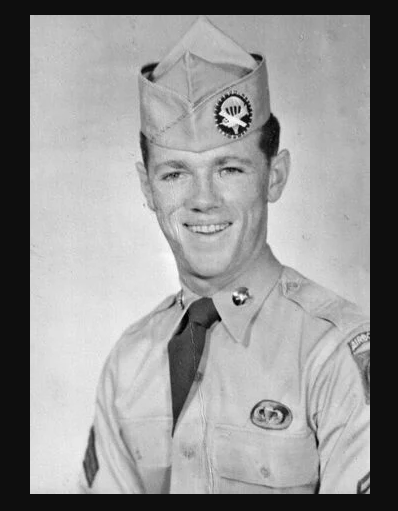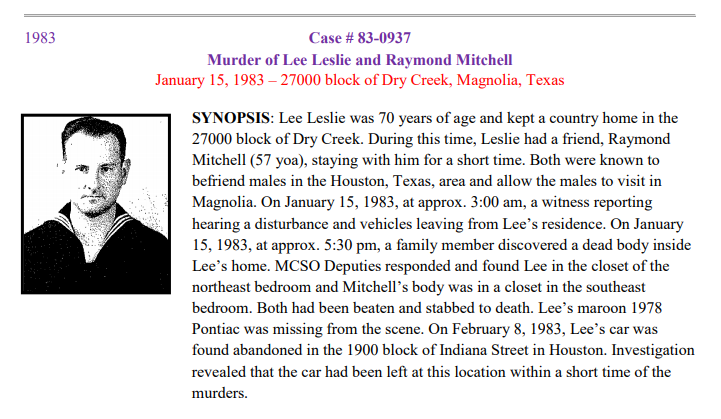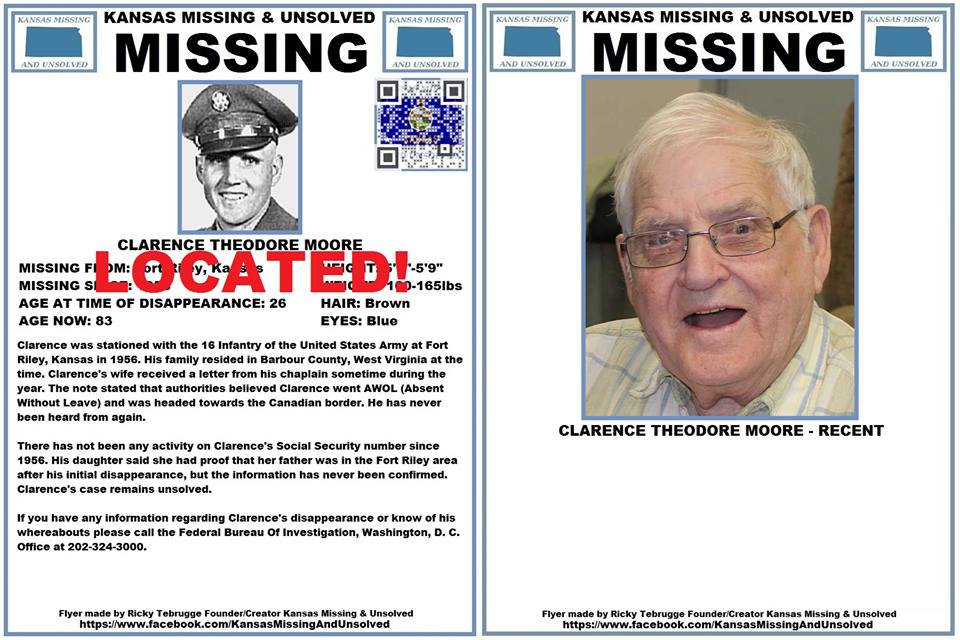|
3 years later, murder of Fort Bragg soldier killed on Memorial Day camping trip remains unsolved
By Christiane Cordero KABC logo
Tuesday, May 30, 2023
LOS ANGELES -- It's been three years since a Fort Bragg soldier was killed while on a camping trip to the Outer Banks, and the case still hasn't been solved.
Now, on a heartbreaking Memorial Day, his family in California continued to beg for help in finding his killer. "A lot of people took his kindness for weakness and that was the strongest thing about him, was how kind-hearted he was," Griselda Martinez, the sister of Spc. Enrique Roman-Martinez said to ABC station KABC. "Fearing his death, just over three years ago, has been forgotten." Roman-Martinez, who was an Army paratrooper serving in the 82nd Airborne Division, was killed during a Memorial Day camping trip. Read More: https://abc11.com/enrique-roman-martinez-fort-bragg-soldier-killed-cold-case-chino/13320520/
0 Comments
by Marcia Martinek Herald Editor Emerita Feb 22, 2023 Updated Feb 22, 2023 The Independence Pass John Doe has been identified. His name is Gardner Paul Smith.
Although the identification has answered a lot of questions about the man whose body was found on Independence Pass in 1970, other questions remain. Some may never be answered. It’s been thought in recent years that DNA would be the only way this man would be identified, and indeed that turned out to be the case. For Jeanne Smith Gaida, a Realtor in Austin, Texas, the news came via a phone call from a cousin who carefully told Gaida that her father had been identified. As far as Gaida knew, her father had deserted the family shortly after her birth and had never been heard from again. Gaida was then contacted by Melissa Kramer, a forensic genealogy analyst for the Colorado Bureau of Investigation, who provided her with a 2016 Herald Democrat article describing the story of the Independence Pass John Doe. Gaida said she has spent 60 years wondering why her father disappeared “and being pissed off and on.” Her mother and other family members were reluctant to discuss her father with her. Yet the cartons of newspaper clippings that she acquired do tell a portion of the story. Gardner Smith was born Sept. 22, 1930, the older son of Paul and Bernita Smith, and attended Modesto High School in California. The Smith family, which included Gardner Smith’s younger brother Armour, was a skiing family. The skiing industry, especially in the West, was just getting started after World War II. Paul Smith’s obituary in The Modesto Bee credits him with creating the ski resort Boreal Mountain California as well as being associated with several other businesses. It said he discovered skiing in 1936 during a trip to the Midwest and returned to Modesto to help charter the Modesto Ski Club. His obituary notes that he continued to ski throughout most of his life. A broken leg at age 74 during a 1973 ski trip to Vail only slowed him down briefly. He continued skiing 25 days a year. His wife was also a skier, and it was natural that the sport was introduced to their sons. Paul Smith lived to be 93 and his wife 88. Since the whereabouts of Gardner Smith were still a mystery when they died, both of their obituaries list him as a survivor. For Gardner Smith, skiing became his life. He attended the University of Nevada in Reno, skiing for the college team with some documented success. His daughter has one undated clipping that describes a win by the Nevada ski team at Edelweiss and says her father took first in the jumping, cross-country and downhill events. In June 1951, Gardner Smith joined the Army, serving two years of active duty and then transferring to the reserves where he served four more years. He was honorably discharged in June 1957. Read More: htmlwww.themountainmail.com/free_content/article_65dd0816-b252-11ed-b641-5fa0bbcacb2b.html
Nancy's son Troy has been missing since 2016.
I have a page for Troy here: https://www.veterandoe.com/missing/troy-galloway-missing-veteran
From her GoFundMe page: https://www.gofundme.com/f/nancy-galloways-medical-expenses
This Gofundme Page has been created for
by: Arezow Doost
Posted: Feb 25, 2021 / 12:01 AM CST / Updated: Feb 25, 2021 / 10:28 PM CST
Investigative Summary:
Texas is one step closer to requiring the use of a national database which uses fingerprints, DNA and dental records to solve missing and unidentified persons cases. Ten states have passed laws mandating police and medical examiners to enter case details to the National Missing and Unidentified Persons System or NamUs – but not Texas, even though it’s based in Fort Worth. Now two Texas families and a newly elected lawmaker are determined to help others looking for loved ones.
HOUSTON (KXAN) — Standing on the side of a packed street in Nuevo Laredo, Mexico, David Fritts held his son’s picture and talked to anyone who would listen.
The photo was a more recent one of Joseph smiling. Fritts would show it to shop owners along the border and people crossing from Texas. He would tell them that he was 5’10”, with brown hair and brown eyes and was last in the Laredo area. “It’s really hard to describe the feeling of looking for your son with a picture and showing it to people … at one moment you’re determined and the other you feel so vulnerable,” the father described. “A lot of people were so kind … really caring people saying, ‘Oh I’m so sad,’ and they would look at the picture and say, ‘Oh, that’s your son, isn’t it?'” He would make the trip countless times, even going to Costa Rica because Joseph loved to surf. “Weeks turned into months,” Fritts said. “As time passed, especially after his brother Jordan’s birthday … we were all realizing how dire it was.” A Marine’s struggle Joseph was Fritts’ middle child. “He was so full of life and had so many great friends and always lit up the room. He was just such a character,” he said, smiling. Fritts recalled how he excelled in college and then how proud he was when he joined the Marines. “Joseph was the rough, tough little buffed-up guy, you know. Even in the Marines, he was number one in that whole class, as far as physical activity, you know. But it’s still tough, you know. It’s still mentally and physically tough, and Joseph didn’t always smile in pictures, but that one he was definitely smiling after boot camp. He was so happy to have graduated,” Fritts said, pointing to a picture of Joseph in uniform.
Continue reading this story at the link below:
https://www.kxan.com/investigations/finding-missing-texans-the-push-to-expand-use-of-a-key-online-tool/
If your state is not requiring the use of NamUs contact your local representative and ask them to start legislation to require it.
Unidentified Person / NamUs #UP68549 Date Body Found: April 12, 2020 Location Found: Shoals Point on Kruzof Island near Sitka, Alaska Estimated Age Range: 30-50 Years Sex: Unsure Race / Ethnicity: Hispanic / Latino, Asian, American Indian / Alaska Native Circumstances of Recovery: AST received a call from a bystander stating they located human remains while exploring Kruzof Island. The remains were located near Shoals Point on what used to be a road/path that has now become overgrown. No known grave sites are located nearby but the area is known for being a WWII site. Condition of Remains: Not recognizable - Partial skeletal parts only Harbor Defenses of Sitka, Alaska LOCATION : Shoals Point, Kruzof Island (Fort Babcock) 6-inch Battery 290 Emergency 6-inch Battery Allen
The first men arrived at Shoals Point in 1942. About thirty men from Battery A of the 266th Coast Artillery were assigned to construct an emergency battery of two old six-inch guns that the Navy gave to the Army for the defense of Sitka Sound. The two guns were emplaced on pedestal mounts just above the high tide line and just inside the trees. The 266th Coast Artillery referred to these guns as Battery Allen in their Christmas Dinner Menu of 1942. Cpl. Ted Gutches spent much of 1942 and 1943 at Shoals Point and has shared stories, photos and other memorabilia from his visit. Read more about this at the link below: Case # 83-0937 Murder of Lee Leslie and Raymond Mitchell January 15, 1983 – 27000 block of Dry Creek, Magnolia, Texas SYNOPSIS: Lee Leslie was 70 years of age and kept a country home in the 27000 block of Dry Creek. During this time, Leslie had a friend, Raymond Mitchell (57 yoa), staying with him for a short time. Both were known to befriend males in the Houston, Texas, area and allow the males to visit in Magnolia.
On January 15, 1983, at approx. 3:00 am, a witness reporting hearing a disturbance and vehicles leaving from Lee’s residence. On January 15, 1983, at approx. 5:30 pm, a family member discovered a dead body inside Lee’s home. MCSO Deputies responded and found Lee in the closet of the northeast bedroom and Mitchell’s body was in a closet in the southeast bedroom. Both had been beaten and stabbed to death. Lee’s maroon 1978 Pontiac was missing from the scene. On February 8, 1983, Lee’s car was found abandoned in the 1900 block of Indiana Street in Houston. Investigation revealed that the car had been left at this location within a short time of the murders. Source: http://www.mctxsheriff.org/divisions/criminal_investigative_division/ News moves really fast and I don't always have time to post it here.
For the latest news regarding these Missing Person cases and Missing Veteran cases follow Veteran Doe on whatever social media platform(s) you enjoy. Clarence Theodore Moore has been located in #Canada - Mr. Moore passed away last year. A positive ID was made thru DNA testing. May he RIP
Eastlake mystery man identified as WWII veteran who disappeared in 1965 POSTED 9:42 AM, JUNE 21, 2018, BY DARCIE LORENO, UPDATED AT 03:12PM, JUNE 21, 2018 EASTLAKE, Ohio -- A man whose 2002 suicide led to extensive speculation about his true identity has been identified as Robert Ivan Nichols, a World War II veteran who disappeared in 1965. But now that authorities know who the man is, they're asking for the public's help to learn why he went off the map. "Someone out there may hold the key as to why," U.S. Marshal Peter Elliot said during a press conference Thursday. "We need the public's help as to why." Joseph Newton Chandler III, a man in his 60s, killed himself in his Eastlake apartment on July 30, 2002. Soon after his death, authorities realized he was living under a stolen identity. To read the rest of this article go to:
|
Missing Persons and Unidentified Persons NewsFollow Veteran Doe's social media for more articles. Those links are on the bottom of the page.
Archives
November 2023
Categories |
| Veteran Doe | News |
Share This Page! You may be the key to bringing someone home!
Follow Veteran Doe's social media
Site Menu
Home | Top Case | Unidentified Persons | Missing Persons | Resources | News | Veteran Resources | Contact
All the case information and photos belong to the proper reporting authorities. Unique content is Copyright © 2023 VeteranDoe.com





 RSS Feed
RSS Feed